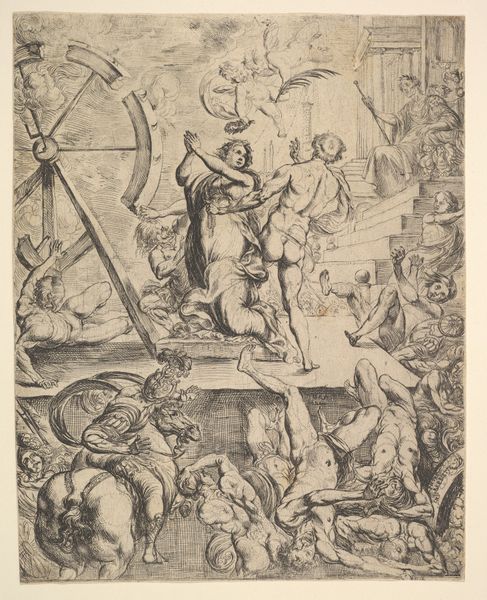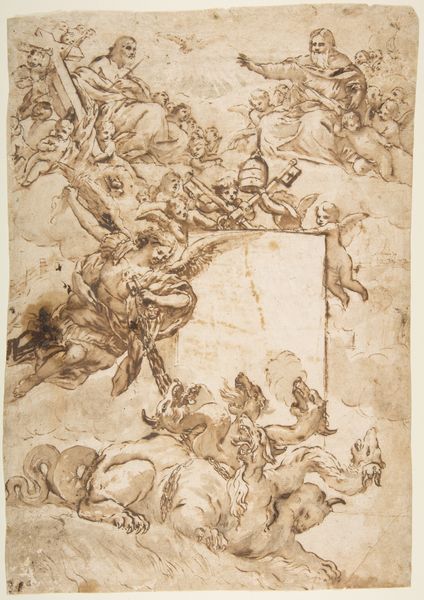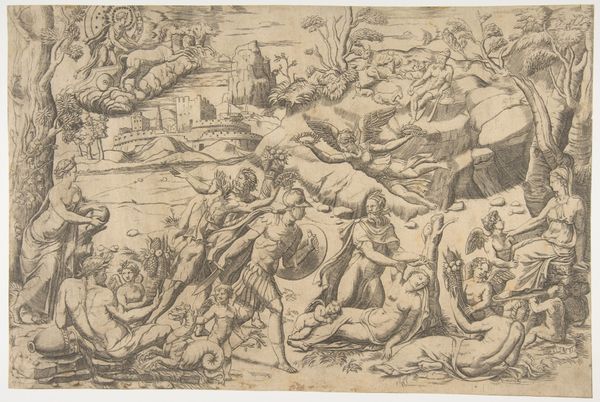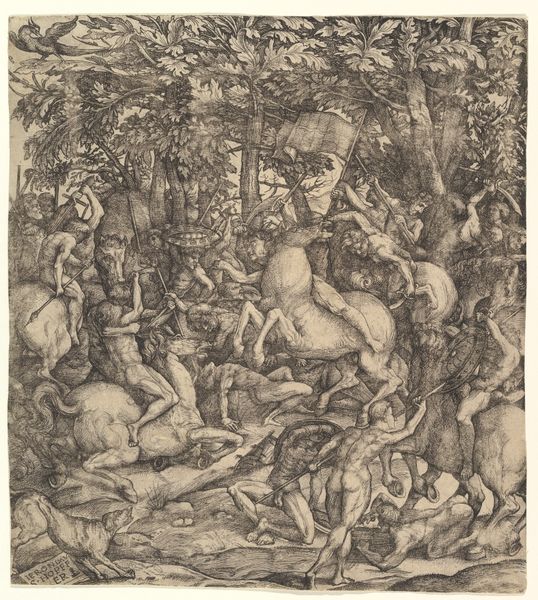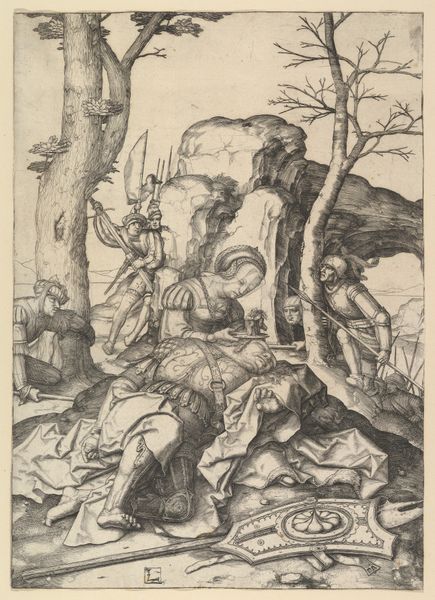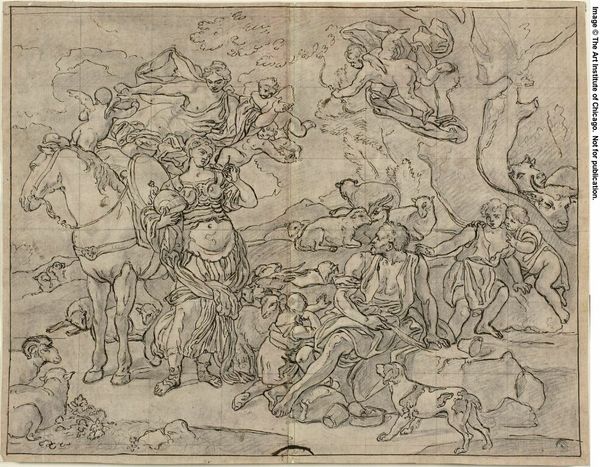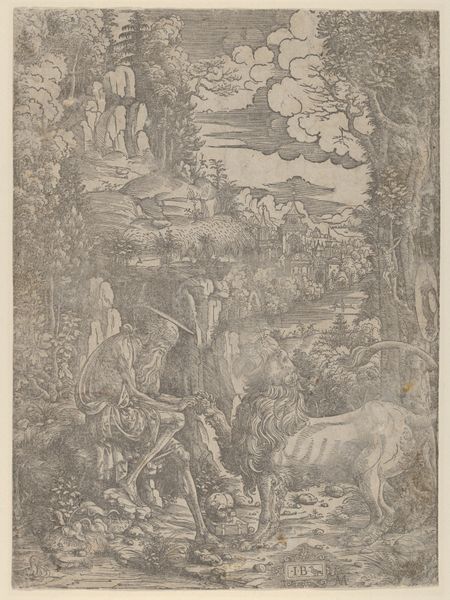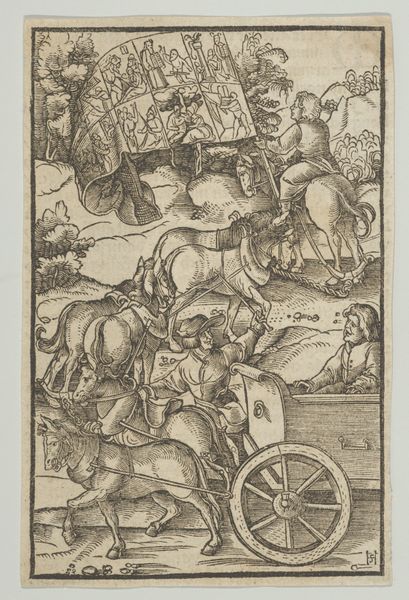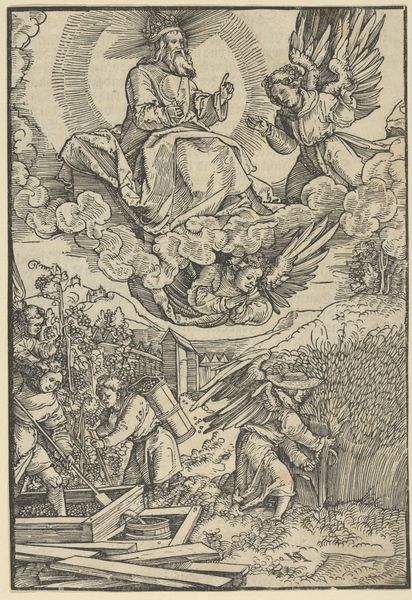
drawing, ink
#
drawing
#
ink drawing
#
medieval
#
narrative-art
#
figuration
#
ink
#
line
#
history-painting
Dimensions: height 155 mm, width 155 mm
Copyright: Rijks Museum: Open Domain
Editor: Here we have a pen and ink drawing, “The Children of Saturn,” dating back to 1470 by an anonymous artist. It's quite dense with figures. I'm immediately struck by its almost nightmarish quality; scenes of labor and torment all cramped together. What do you see in this piece? Curator: The image pulls us into a world steeped in astrological symbolism, doesn’t it? Look at the prevalence of scenes representing labor and suffering. These are potent symbols connected to Saturn, often seen as a malefic planet in medieval astrology. Saturn, you see, was linked to melancholy, old age, and limitations. Editor: So the figures trapped or toiling represent that Saturnian influence? The old woman with the staff, the prisoners... Curator: Precisely! And note how those figures seem to inhabit different spaces, almost like stages of life or aspects of society. We see a microcosm reflecting the constraints and hardships that were believed to be governed by Saturn's influence. Do you see any other recurring motifs? Editor: The tools, maybe? Shovels, axes... Even what looks like a torture device in the top left. They all imply work and… well, suffering. Curator: Yes! These are emblems, reflecting the human experience of labour and inevitable decay linked with Saturn. It makes me think of the anxieties about mortality so prevalent in that era. These anxieties also drove innovation and invention, what do you think about it? Editor: It's interesting to think of a drawing as a map of cultural anxieties and beliefs made visual! Curator: Indeed, and through careful observation, we've revealed a story deeply rooted in medieval cosmology, haven’t we? Editor: I had not initially realized it, but seeing these motifs, it really helps me realize the complexity involved with symbolism during that period.
Comments
No comments
Be the first to comment and join the conversation on the ultimate creative platform.

